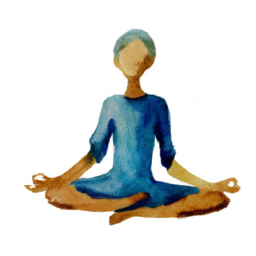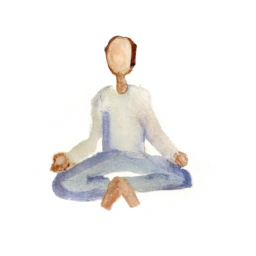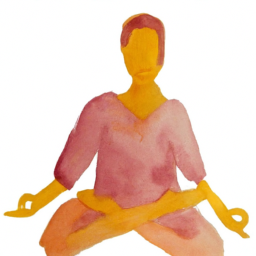



Yoga for the beginner
Yoga is a great way to relax your body, mind, and soul. It is a form of exercise that focuses on breathing techniques, poses, and meditation to promote physical and mental wellness. If you are just starting out with yoga, it can be overwhelming trying to figure out where to begin. Here are a few tips to help you get started on your yoga journey.
1. Find a good yoga teacher: A good yoga teacher will guide you through the poses and help you develop a solid foundation for your practice. Look for a teacher who is experienced, knowledgeable, and patient.
2. Start with basic poses: There are many different yoga poses, but as a beginner, it’s best to start with the basic ones. These poses will help you build strength, flexibility, and balance, while also teaching you proper alignment.
3. Listen to your body: Yoga is not a competition. It’s important to listen to your body and only do what feels comfortable and safe. Never push yourself too hard or try to force a pose that doesn’t feel right.
4. Breathe deeply: Breathing is an essential part of yoga. Focus on taking deep, slow breaths in and out through your nose. This will help you relax and stay present in the moment.
5. Practice regularly: Consistency is key when it comes to yoga. Try to practice at least a few times a week to see the most benefits.
Remember, yoga is a journey, not a destination. Be patient with yourself and enjoy the process of discovering what your body and mind are capable of.
“Discover the Fundamentals: A Beginner’s Guide to Essential Yoga Poses”
Yoga is much more than just a physical practice. It is a holistic approach to health and wellness that involves the body, mind, and spirit. With regular yoga practice, you can improve flexibility, strength, balance, and overall well-being.
In this beginner’s guide to essential yoga poses, you will learn the foundational poses that form the basis of any yoga practice. These poses will help you develop strength, flexibility, and balance while also calming the mind and reducing stress.
Each pose is accompanied by step-by-step instructions and illustrations to ensure proper alignment and technique. You will also learn modifications and variations for each pose, making it accessible to yogis of all levels.
Whether you are a complete beginner or looking to deepen your practice, this guide will provide you with the tools you need to build a strong foundation in yoga. With regular practice, you will begin to see the benefits both on and off the mat.
Yoga 101: Mastering Basic Poses for a Strong Foundation
Yoga is a great way to improve flexibility, strength, and balance while also reducing stress and anxiety. However, it can be intimidating for beginners who may not know where to start. That’s where mastering basic yoga poses comes in.
By mastering basic poses, you’ll build a strong foundation that will help you progress to more advanced poses. It’s important to remember that yoga is a journey, and you should focus on your own progress and not compare yourself to others.
Some basic poses include mountain pose, downward dog, warrior I, and child’s pose. These poses may seem simple, but they require proper alignment and engagement of muscles. It’s important to listen to your body and not push yourself too far, as this can lead to injury.
As you continue to practice, you’ll find that your flexibility, strength, and balance will improve. You may even notice improvements in your mental health and overall well-being. Remember to be patient with yourself and enjoy the journey. Namaste.
The Crucial Role of Alignment in Optimal Performance and Safety
Alignment is a critical factor in achieving optimal performance and safety in a wide variety of settings, from manufacturing plants to sports teams to healthcare facilities. Simply put, alignment refers to the proper positioning of people, processes, and equipment to ensure that they are all working together in the most efficient and effective way possible.
In manufacturing, for example, misaligned equipment or processes can lead to costly downtime, reduced productivity, and even safety hazards. In sports, a lack of alignment between coaches, players, and strategies can result in poor performance on the field and increased risk of injury. And in healthcare, misaligned processes or communication can lead to medical errors, patient harm, and even fatalities.
To achieve optimal alignment, it is crucial to have clear goals and objectives, as well as a shared understanding of roles, responsibilities, and expectations. Effective communication and collaboration are also essential, as is ongoing monitoring and assessment to identify and address any issues or inefficiencies.
By prioritizing alignment and ensuring that all systems and stakeholders are working together seamlessly, organizations can improve performance, reduce risk, and ultimately achieve greater success and safety.
Tailoring Fitness: Custom Modifications for All Body Types and Abilities
At Tailoring Fitness, we believe that everyone deserves a workout plan that is tailored to their specific needs and abilities. We understand that each person has a unique body type, fitness level, and health condition that requires a personalized approach.
Our team of experienced and certified trainers is dedicated to creating customized fitness programs that are designed to help individuals achieve their goals and improve their overall health and well-being. We take into consideration factors such as age, gender, weight, height, and medical history to create a workout plan that is safe, effective, and enjoyable.
Whether you are a beginner or an experienced athlete, our trainers will work with you to develop a plan that meets your individual needs. We offer a range of services, including one-on-one personal training, group fitness classes, nutrition coaching, and wellness counseling.
At Tailoring Fitness, we don’t believe in a one-size-fits-all approach. We understand that each person is unique and requires a personalized plan to achieve their desired results. That’s why we take the time to get to know our clients and develop a plan that is tailored to their specific needs and abilities.
So if you’re looking for a fitness program that is customized to your individual needs, look no further than Tailoring Fitness. Contact us today to schedule a consultation and start your journey towards a healthier, happier you.
– Tips for building a consistent practice
1. Set a specific time and place for your practice: Choose a time and place where you can regularly practice without interruptions. It helps to create a routine and stick to it.
2. Start small: Don’t try to do too much too soon. Start with a small amount of time each day and gradually increase it as your practice becomes more consistent.
3. Be patient: Consistency takes time and effort. Don’t get discouraged if you miss a day or two. Just pick up where you left off and keep going.
4. Find a practice that works for you: There are many different types of practices, from meditation to yoga to journaling. Find one that resonates with you and feels sustainable.
5. Hold yourself accountable: Find ways to hold yourself accountable, such as tracking your progress or practicing with a friend. This can help motivate you to stay consistent.
6. Celebrate your progress: Take time to acknowledge your progress and celebrate your successes. This can help you stay motivated and inspired to continue practicing consistently.
– Benefits of yoga for mental and physical health
1. Reduces stress and anxiety: Yoga is known to be a great stress buster. It helps to calm your mind and reduce anxiety by regulating the stress hormones in your body. Regular practice of yoga can also help to improve your mood and increase your overall sense of wellbeing.
2. Improves flexibility and strength: Yoga involves a series of postures or asanas that require you to stretch and hold different parts of your body. This helps to improve your flexibility and also strengthens your muscles, including the ones that support your joints.
3. Enhances respiratory function: With its focus on deep breathing, yoga can help to improve your lung function and increase your oxygen intake. This can be particularly beneficial for people with respiratory problems like asthma.
4. Boosts immunity: Research has shown that regular practice of yoga can boost your immune system by increasing the production of antibodies and immune cells in your body. This can help to protect you against a range of illnesses and infections.
5. Improves sleep quality: Yoga can help to improve the quality of your sleep by reducing stress and anxiety, and promoting relaxation. This can be particularly helpful for people who suffer from insomnia or other sleep disorders.
6. Promotes mindfulness: Yoga is a practice that involves being present in the moment and focusing on your breath and body. This can help to promote mindfulness and improve your ability to concentrate and stay focused.
Overall, yoga is a holistic practice that can benefit both your mental and physical health in numerous ways. Whether you are looking to reduce stress, improve your flexibility, or boost your immunity, yoga can be a great way to achieve your health goals and live a more balanced and fulfilling life.
– Recommended props for beginners
1. Yoga mat: A good quality yoga mat is essential for practicing yoga. It provides a non-slip surface and cushioning for the joints during yoga poses.
2. Yoga blocks: Yoga blocks are helpful for beginners to modify poses and make them more accessible. They can also be used to deepen stretches.
3. Yoga strap: A yoga strap helps to improve flexibility and balance. It can be used to support and deepen stretches and poses.
4. Blanket: A blanket is a versatile prop that can be used for support and cushioning during certain poses. It can also be used for warmth during relaxation and meditation.
5. Bolster: A bolster is a large cushion that can be used for support during restorative yoga poses. It helps to promote relaxation and release tension in the body.
6. Meditation cushion: A meditation cushion provides support and comfort for the hips and spine during seated meditation. It helps to maintain proper posture and alignment.
By using these props, beginners can safely and comfortably practice yoga, and gradually build strength, flexibility, and balance. As you progress in your practice, you may find that you need fewer props or different ones to support your evolving needs.
Ways to incorporate mindfulness into practice
1. Start the day with a mindful routine: Begin your day with a few minutes of mindfulness meditation or deep breathing exercises. This helps you set a positive tone for the day ahead.
2. Practice mindful listening: During consultations or conversations with patients, try to listen without judgment or distraction. Pay full attention to what they are saying and try to understand their perspective.
3. Take mindful breaks: Take short mindful breaks during the day to reduce stress and improve focus. Step outside and take a few deep breaths or simply close your eyes and focus on your breath for a few moments.
4. Use mindfulness in decision-making: When making important decisions, take a moment to reflect and be present. Consider the possible outcomes of your decision and how it may impact your patients and their health.
5. Incorporate mindfulness into patient care: Teach your patients mindfulness techniques and encourage them to practice them regularly. This can help them manage their stress and improve their overall health and well-being.
By incorporating mindfulness into your practice, you can improve your own well-being and provide better care for your patients.
– Common mistakes to avoid
1. Not proofreading your work: One of the most common mistakes that people make is not proofreading their work before submitting it. This can lead to simple errors such as spelling and grammar mistakes that can negatively impact the overall quality of your work.
2. Failing to follow instructions: Another common mistake is failing to follow instructions. Whether it’s a job application or a school assignment, failing to follow instructions can result in a loss of points or even disqualification.
3. Lack of research: Before starting any project, it’s essential to conduct thorough research to gain a better understanding of the topic. Failing to do so can result in incomplete or inaccurate information.
4. Plagiarism: Plagiarism is a serious offense that can lead to severe consequences. It’s essential to properly cite all sources and ensure that all work is original.
5. Procrastination: Procrastination is a common mistake that can lead to rushed and incomplete work. It’s essential to manage your time effectively to ensure that you have enough time to complete your work to the best of your abilities.
By avoiding these common mistakes, you can ensure that your work is of the highest quality and meets all expectations.
– Resources for continuing yoga education and practice
1. Yoga Alliance: Yoga Alliance is the largest nonprofit organization that represents the yoga community worldwide. They offer continuing education courses, workshops, and events for yoga students, teachers, and schools. Their website also provides resources and information on yoga ethics, standards, and guidelines.
2. Yoga Journal: Yoga Journal is a popular magazine that covers different aspects of yoga, including poses, meditation, lifestyle, and philosophy. They also offer online courses, videos, and workshops for yoga practitioners and teachers.
3. Yoga International: Yoga International is an online platform that provides a wide range of yoga resources, including classes, workshops, articles, and videos. They also offer a comprehensive yoga teacher training program that includes anatomy, sequencing, and philosophy.
4. Yoga Alliance Continuing Education Providers: Yoga Alliance has a directory of registered continuing education providers who offer courses and workshops on different aspects of yoga, such as anatomy, philosophy, meditation, and ethics. These providers have met the Yoga Alliance standards for continuing education and are recognized by the organization.
5. Local studios and teachers: Many yoga studios and teachers offer workshops, classes, and retreats that focus on specific aspects of yoga practice or philosophy. Attending these events can help deepen your knowledge and practice of yoga and connect with other like-minded practitioners.
6. Online courses and resources: There are numerous online courses, webinars, and resources available on different yoga topics, such as meditation, pranayama, and Ayurveda. Some popular online platforms for yoga education include Udemy, Skillshare, and Yoga International.